11.2 Engendered Lives: Representations of Women in Art and Literature
Short stories centering on the themes of romantic relationship, love, and marriage can be extended to include dramatic readings of plays such as A Doll’s House by Henrik Ibsen and Oscar Wilde’s satirical play of manners and morals The Importance of Being Earnest. Art works can be explored from a social, cultural, and historical context. Explore the way different artists depict women, men, and children. How are they dressed? What can be learned about the artists and the history of the painting? What can be understand about the social classes? How are women depicted? How did female artists depict girls and women? To what extent were women artists’ work featured? (see Appendix section on Women Artists). How do different authors such as Kate Chopin, Katherine Mansfield, and Guy De Maupassant present the “role captivity” that constrained women’s rights and freedoms? What has changed? What has stayed the same?
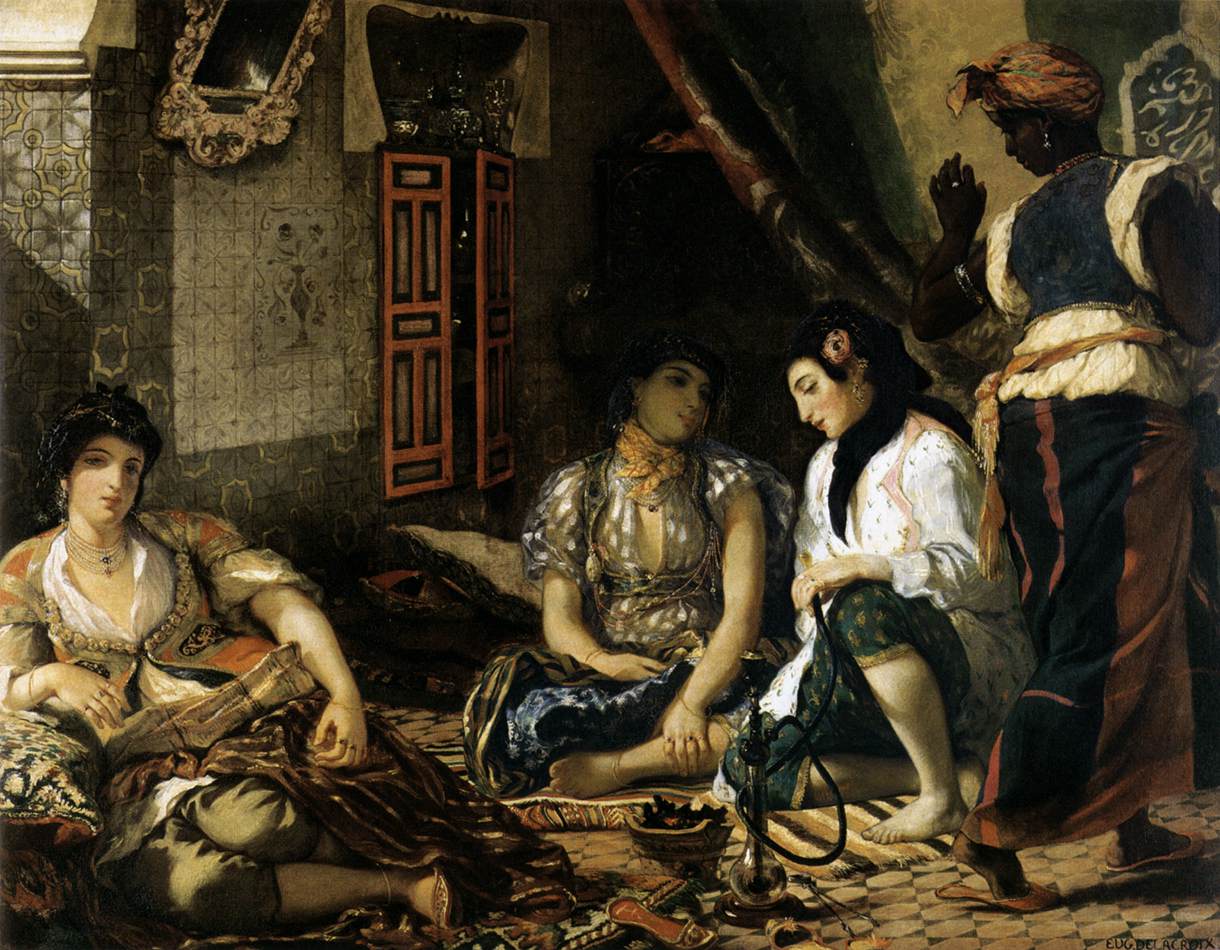
Courtesy: By Eugène Delacroix – Web Gallery of Art: Image Info about artwork, Public Domain, https://commons.wikimedia.org/w/index.php?curid=15387330
Questions for Further Inquiry
You can compare Eugene Delacroix’s visual language with Pablo Picasso’s rendering of “The Women of Algiers.” Write down your initial observations and impressions of each painting. What questions arise? What can you learn from researching the history of the painting and the artist? Amy Tucker (2002) explains that the “realistic and ethnographic features of Delacroix’s harem are abstracted or erased, the figures are more easily read as models in an artist’s studio, denuded and shifted from canvas to canvas; their features are interchangeable…Picasso’s various transformations destabilize the visual language of Delacroix’s painting” (Tucker, 2002, –.254-255). How does each artist portray women? Research the origins of the paintings and the representation of women. What assumptions (overt and hidden) are made about women and gender roles? How can works of art challenge and disorient assumptions we might have about people and places? To what extent an interpretation of a work of art (or any text) result in a re-creation of a text?
You can also view Pablo Picasso (1881-1973), The Women of Algiers (1955). Lithograph. Musée Picasso, Paris, France. For more information about The women of Algiers by Pablo Picasso, please open the link here.
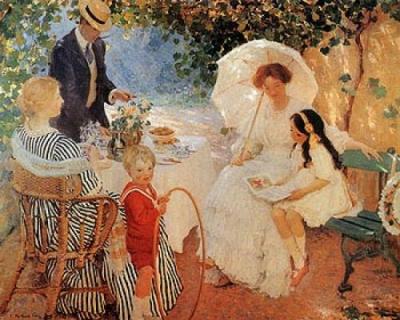
Courtesy: By E. Phillips Fox – http://serendipityvicki.blogspot.nl/2011_04_10_archive.html, Public Domain, https://commons.wikimedia.org/w/index.php?curid=19766059
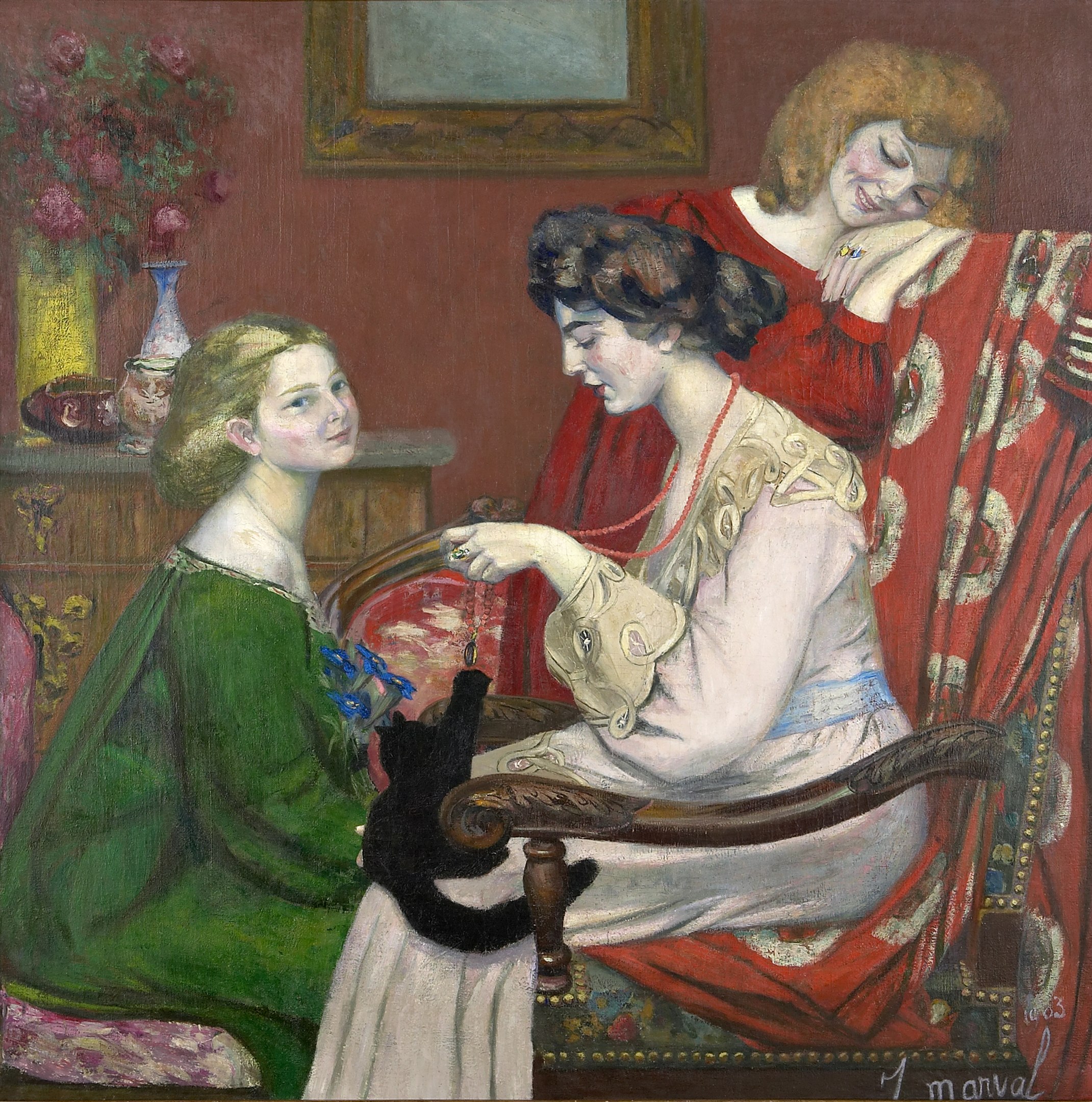
Courtesy: By Jacqueline Marval – http://www.artnet.com/artists/jacqueline-marval/les-coquettes-a-4REGRU-KTX5NhNC10uO4Bw2, Public Domain, https://commons.wikimedia.org/w/index.php?curid=71898750
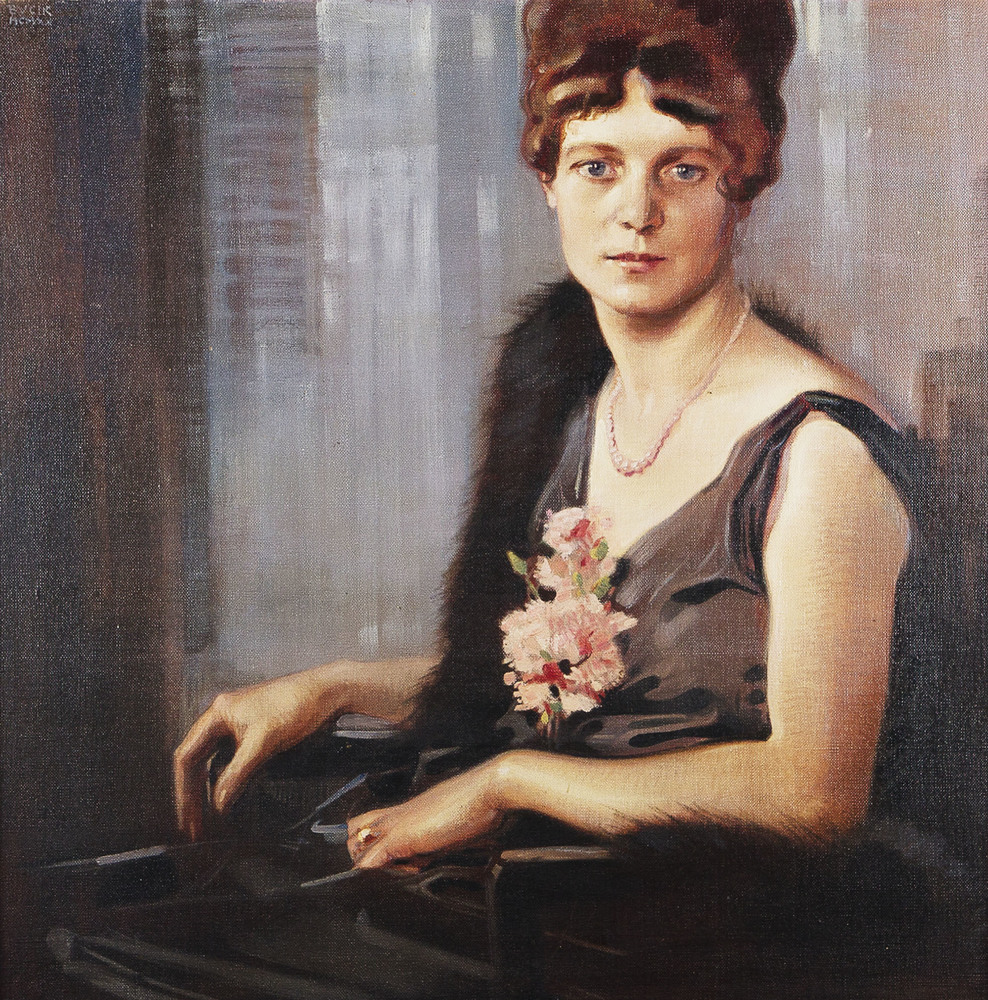
Courtesy: By Avgust Andrej Bucik – https://goriskimuzej.si/o-nas/galerija/umetnostna-in-kulturna-zgodovina, Public Domain, https://commons.wikimedia.org/w/index.php?curid=113879081
Questions for Further Inquiry
You could explore the changing social roles of women in the late 19th century and early 20th century or you can explore the rise of feminism in art and literature. How can works of art and literature be revisited through a social, cultural, and historical lens? How were women portrayed in art and to what extent was race, culture, and class represented? While women earned voting rights in 1920 in the United States, harsh inequalities still prevented women from fully participating in work and education spheres. In other countries, women’s rights were not respected. British writer Virginia Woolf describes these inequities in books such as A Room of One’s Own (1929) and Three Guineas (1938). How have women been depicted in art throughout the ages?
In How to read and write about poetry, Susan Holbrook (2022) writes that poet Edna St. Vincent Millay embodied
the New Woman, that product of first-wave feminism who had untied her corsets, thought independently, and played a greater role in public life. Despite these advancements, however, social expectations for men and women still differed vastly. In romantic and sexual terms, the mainstream model for women of the early twentieth century resembled that of her nineteenth-century sister (p. 26).
“I, being born a woman and distressed” by Edna St. Vincent Millay
I, being born a woman and distressed
By all the needs and notions of my kind,
Am urged by your propinquity to find
Your person fair, and feel a certain zest
To bear your body’s weight upon my breast:
So subtly is the fume of life designed,
To clarify the pulse and cloud the mind,
And leave me once again undone, possessed.
Think not for this, however, the poor treason
Of my stout blood against my staggering brain,
I shall remember you with love, or season
My scorn with pity,—let me make it plain:
I find this frenzy insufficient reason
For conversation when we meet again. (1923)
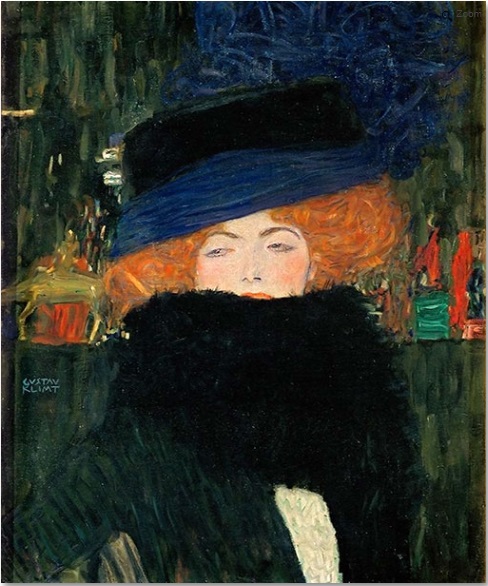
Courtesy: By Gustav Klimt – http://devaneiosurbanos.blogspot.com.es/2013_01_01_archive.html, Public Domain, https://commons.wikimedia.org/w/index.php?curid=33933577
Evocative Settings
The setting of many of O. Henry’s (1862-1910) short stories like “Transients in Arcadia” and “The Gift of the Magi” is early twentieth century Manhattan, New York. This was a time of rapid industrialization, social mobility, and transformative change.O. Henry’s themes centre around values, escape, self-realization, and identity. In “Transients of Arcadia” the main characters escape the tedium of their work by dressing up, creating alternative identities, and spending time at the “Lotus Hotel” near Madison Avenue. Values, lifestyles, and social roles are also highlighted in the 1920s short stories like “The Diamond as Big as the Ritz” and “The Rich Boy” by F.Scott Fitzgerald (1896-1940). The paintings of John Sloan conveyed the social realism of everyday life in growing cities like Chicago, Boston, and New York. Students can compare the short stories of writers like O. Henry and F. Scott Fitzgerald to notice similarities and differences in themes, style, character portrayals, and so on. A comparison of art during the time period (1850s-1920s) would highlight the increasing advances of technology, changes in work, politics, lifestyles, fashion, and values, and social mores of the time.
References
“The Gift of the Magi” and other short stories by O. Henry (1905) can be found here.
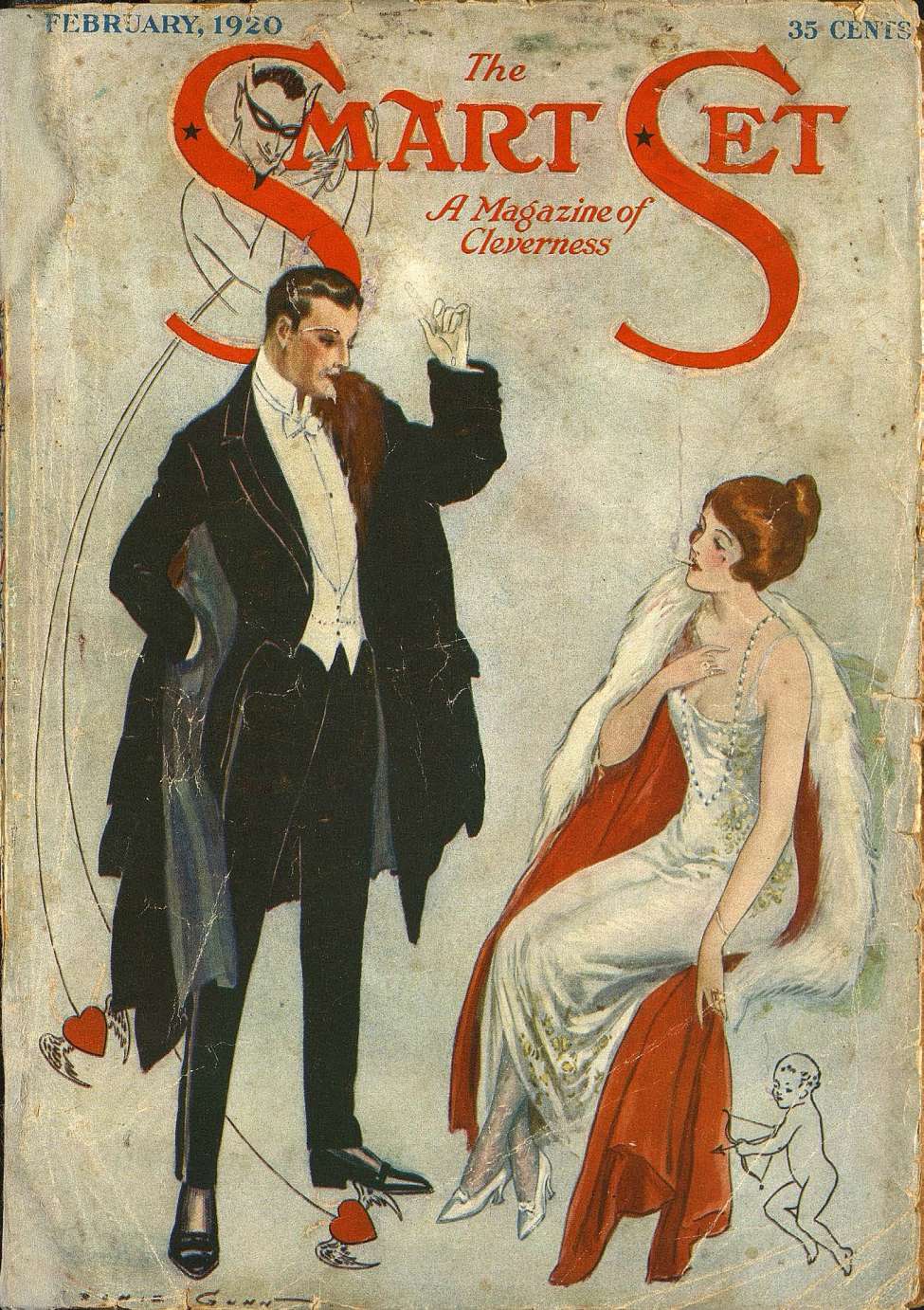
Courtesy: By Archie Gunn – Scan of the magazine cover. Comicbookplus: https://comicbookplus.com/?dlid=69532, Public Domain, https://commons.wikimedia.org/w/index.php?curid=107492051
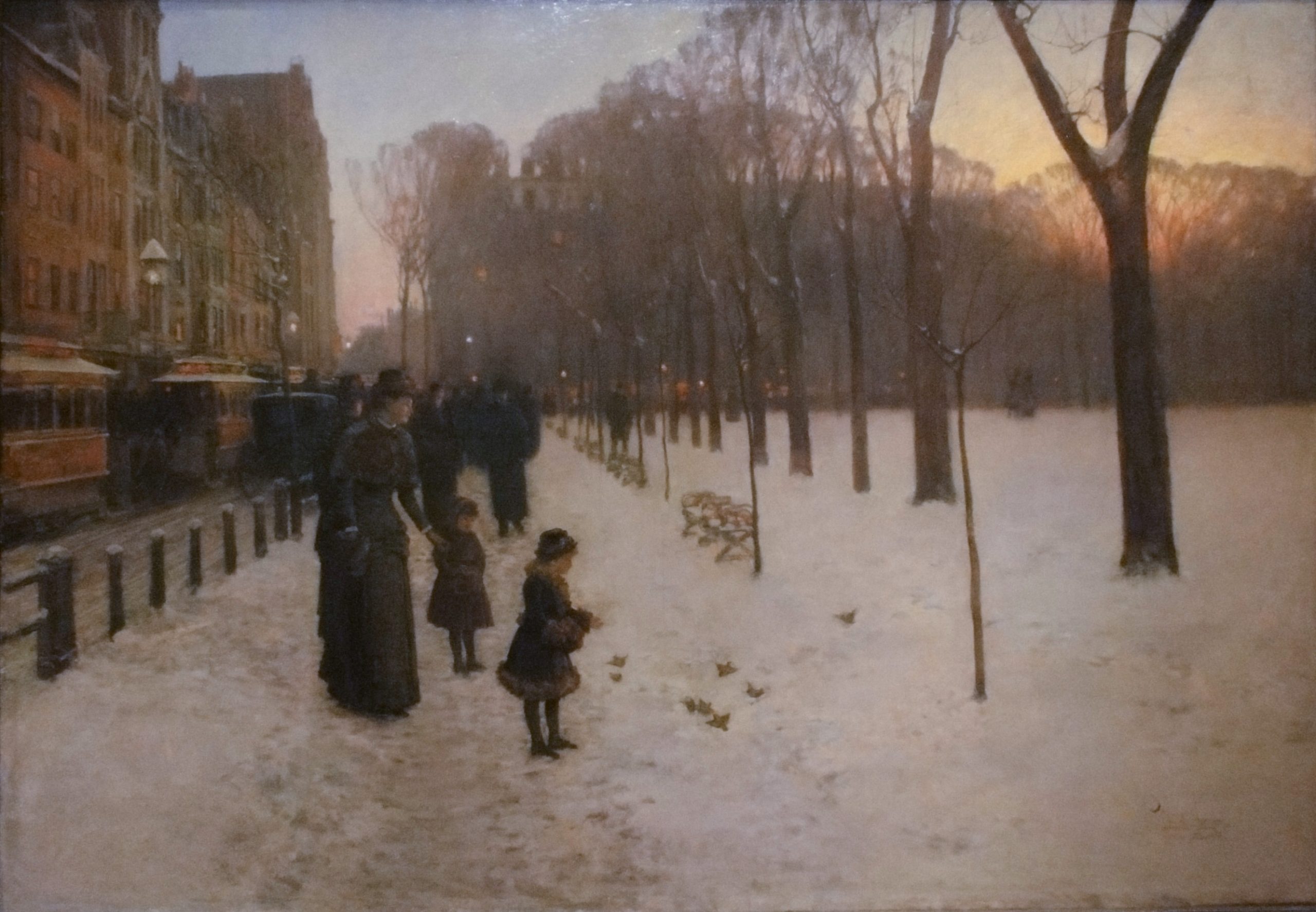
Courtesy: By Childe Hassam – https://farm4.staticflickr.com/3277/5873095477_7afb06fbba_o_d.jpg, Public Domain, https://commons.wikimedia.org/w/index.php?curid=18466507
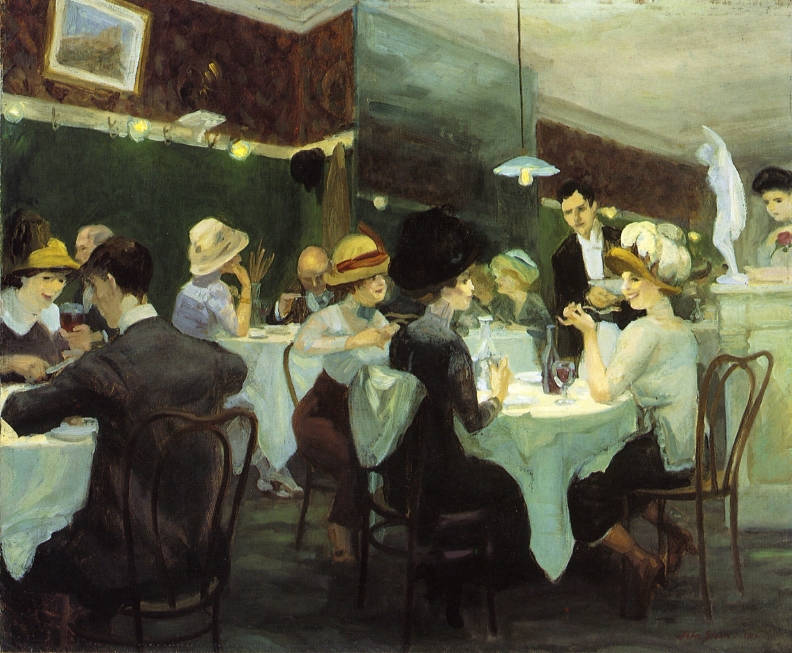
Courtesy: By John Sloan – The Athenaeum: Home – info – pic, Public Domain, https://commons.wikimedia.org/w/index.php?curid=6489937
“This painting shows interior of Renganeschi’s Restaurant, 139 West Tenth Street, New York City, filled with patrons dressed in the fashion of the time. Couples sit at tables. At right a waiter stands at a table where 3 women are seated.” Retrieved Feb. 20, 2023. https://commons.wikimedia.org/wiki/File:Art_Institute_of_Chicago-1005.jpg#/media/File:Renganeschi’s_Saturday_Night_1912_John_Sloan.jpg
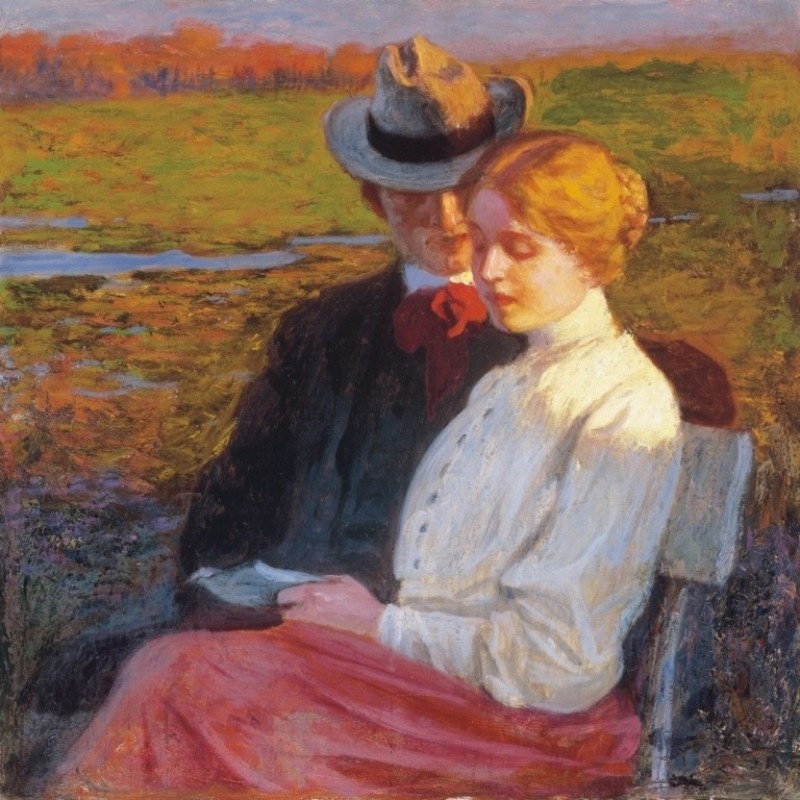
Courtesy: By Tihamér Margitay – kieselbach.huInfoPic, Public Domain, https://commons.wikimedia.org/w/index.php?curid=18402748
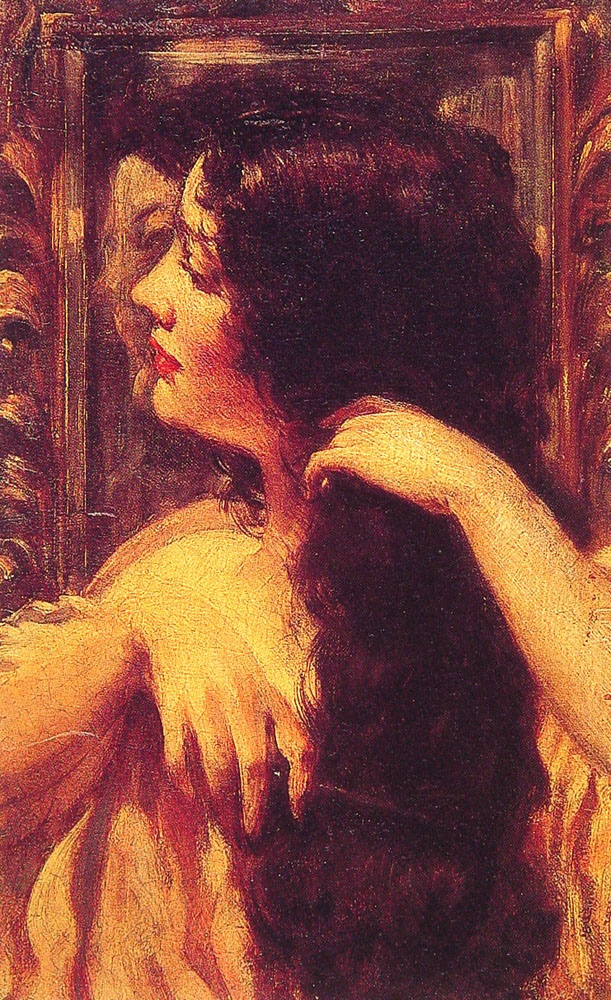
Courtesy: By James Carroll Beckwith – [1], Public Domain, https://commons.wikimedia.org/w/index.php?curid=3217873
Excerpt from “The Gift of the Magi” by O. Henry
“One dollar and eighty-seven cents. That was all. And sixty cents of it was in pennies. Pennies saved one and two at a time by bulldozing the grocer and the vegetable man and the butcher until one’s cheeks burned with the silent imputation of parsimony that such close dealing implied. And the next day would be Christmas….
Now there were two possessions of the James Dillingham Youngs in which they both took a might pride. One was Jim’s gold watch that had been his father’s and his grandfather’s. The other was Della’s hair Had the Queen of Sheba lived in the flat across the air-shaft, Della would have let her hair hang out the window day to dry just to depreciate Her Majesty’s jewels and gifts […] (Henry, 1905)
The gift of the magi and other stories. Reader’s Digest Association. (Illustrations by Gordon Grant and Afterword by Richard O’Connor), 1987, p. 12.
For the complete short story, please open the links below.
To read “The Gift of the Magi” by O.Henry please open the link here.
To read “Transients in Arcadia” by O.Henry please open the link here.
Dramatic Texts and Art Images
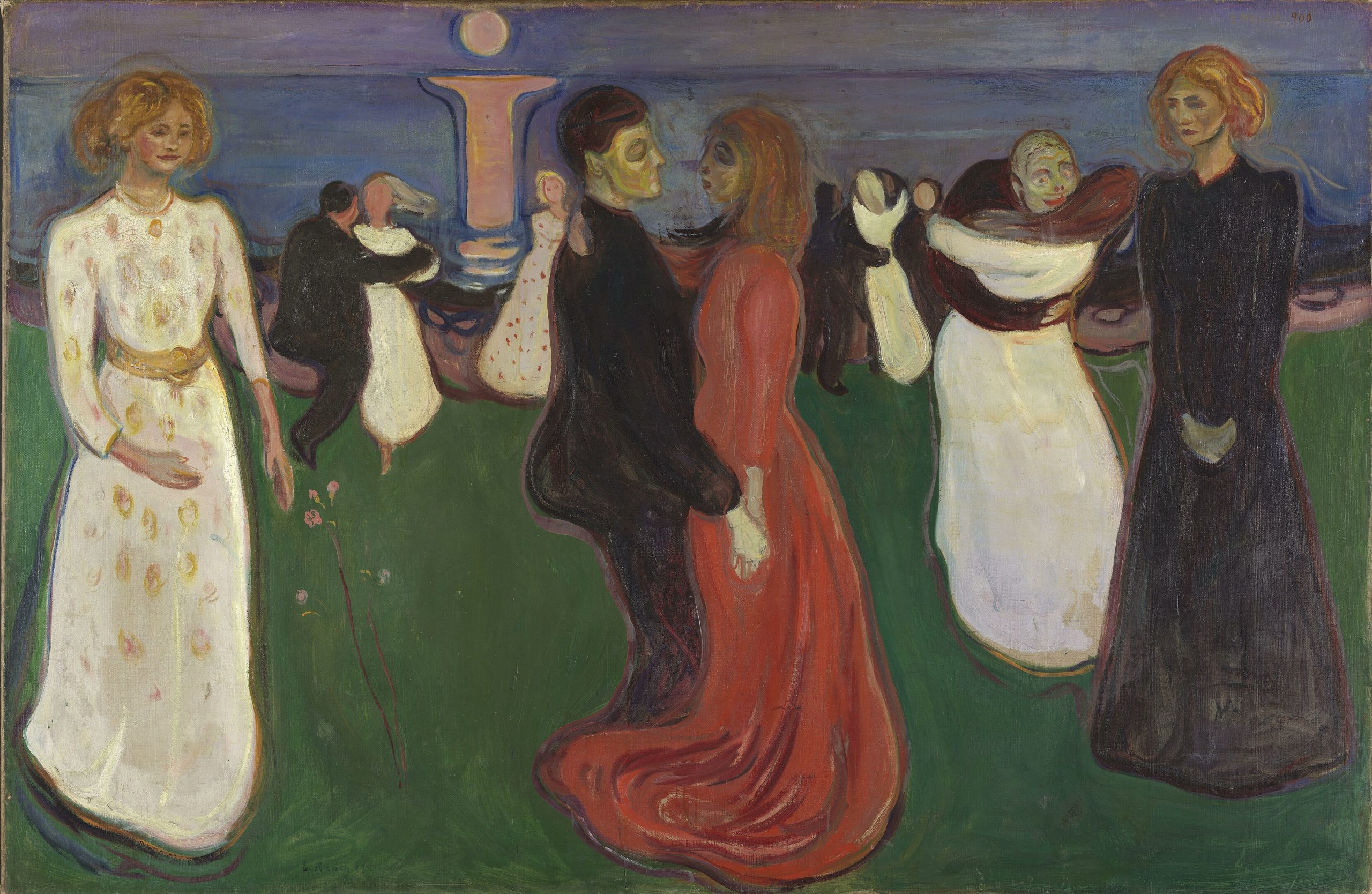
Courtesy: Gift from Olaf Schou 1910. “https://www.nasjonalmuseet.no//en/collection/object/NG.M.00941” is licensed under CC BY 4.0.
Excerpt from Henrik Ibsen’s “A Doll’s House” (written in 1879)
“Security is very seductive, Mrs. Helmer” says Nils Krogstad in Henrik Ibsen’s A Doll’s House. In his his classic play of social realism, the themes of hypocrisy, social role captivity, conformity, and the illusion of security and love are explored. After a series of events that expose the layers of deception that frame her marriage, the main protagonist Nora Helmer realizes that she has been psychologically captive in a marriage when truth, trust, and love have been illusive. In order to “reclaim” her identity, she must make a courage choice. Her husband Helmer warns her that if she decides to abandon her duties, she would lose her financial security and would certainly risk becoming a social outcast. Torvald considers Nora to be suffering from “madness”; he reminds Nora that her “sacred duties” are being “a wife and a mother.” He calls Nora “a child” who does not have the capacity to make logical decisions. She replies:
NORA.
I don’t believe that any longer. I believe that before all else I am a reasonable human being just as you are—or, at all events, that I must try and become one. I know quite well, Torvald, that most people would think you right and the views of that kind are to be found in books; but I can no longer content myself with what most people say or with what is found in books. I must think things over for myself and get to understand them….You neither think nor talk like the man I could bind myself to. As soon as your fear was over—and it was not fear for what threatened me but for what might happen to you—when the whole thing was past, as far as you were concerned it was exactly as if nothing happened. Exactly as before, I was your little skylark, your doll, which would in the future treat with doubly gentle care because it was so brittle and fragile.
(Getting up). Torvald—it was then it dawned upon me that for eight years I had been living here with a strange man and had borne him three children. Oh, I can’t bear to think of it […] (Ibsen, 1879)
To access the complete play please open the link here.
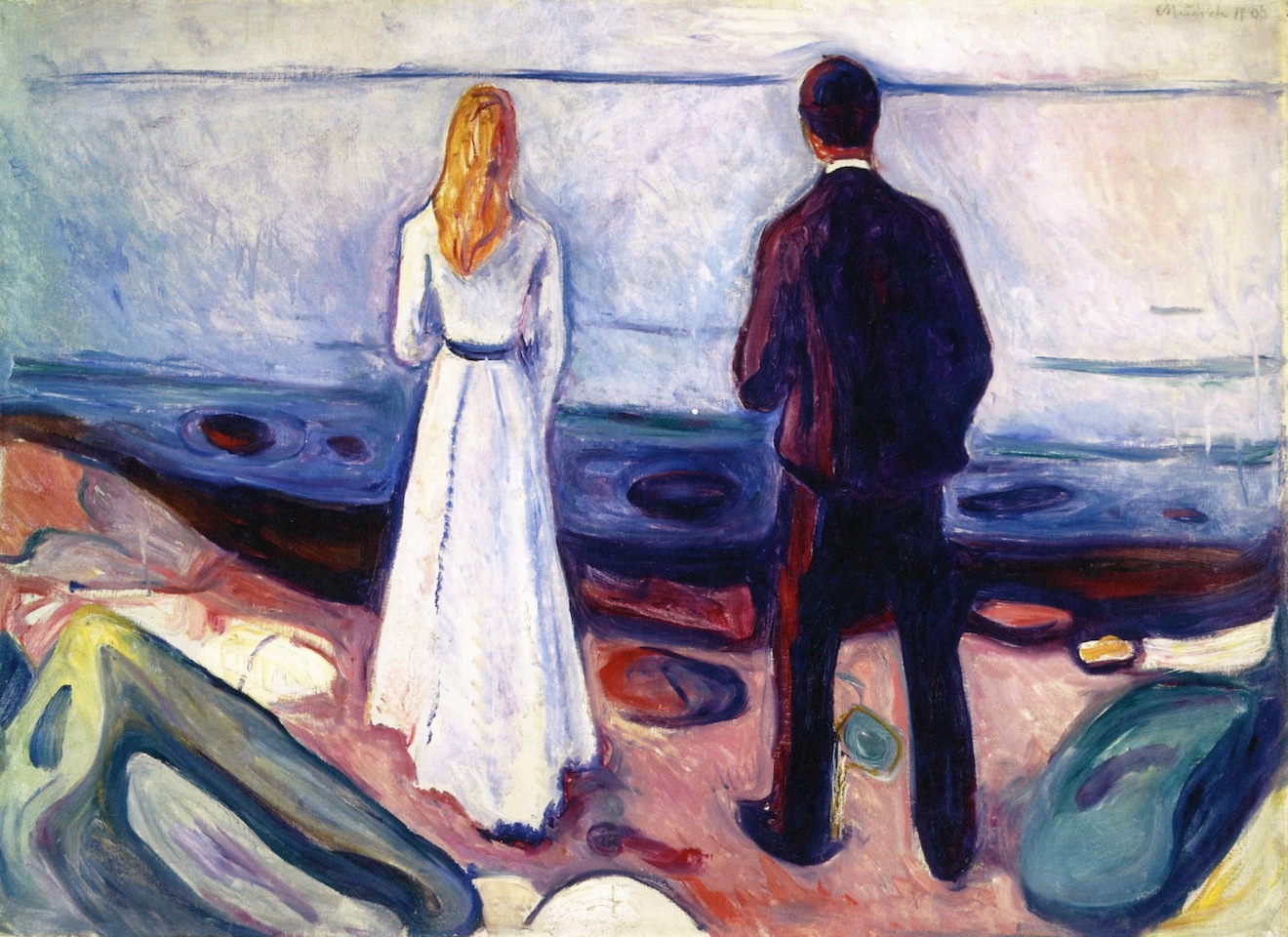
Courtesy: By Edvard Munch – The Athenaeum: pic, Public Domain, https://commons.wikimedia.org/w/index.php?curid=37981180
The paintings of Edvard Munch (1863-1944) often feature people who are alone, alienated, or disconnected from each other. His paintings reflect the anguish and struggle that he had in establishing successful relationships.
A Closer Look at two Pre-Raphaelite Masterpieces:
Many art galleries and museums world wide offer self-directed virtual tours. In addition, there are essays and learning resources to further research artists’ lives and their major works. Learners can research the way different paintings are interpreted. The story behind a particular painting may also further enrich a student’s understanding and appreciation of visual art that complements a literary work. An essay about Edward Burne-Jones’ “The Love Song” further analyzes the story behind his richly detailed painting.
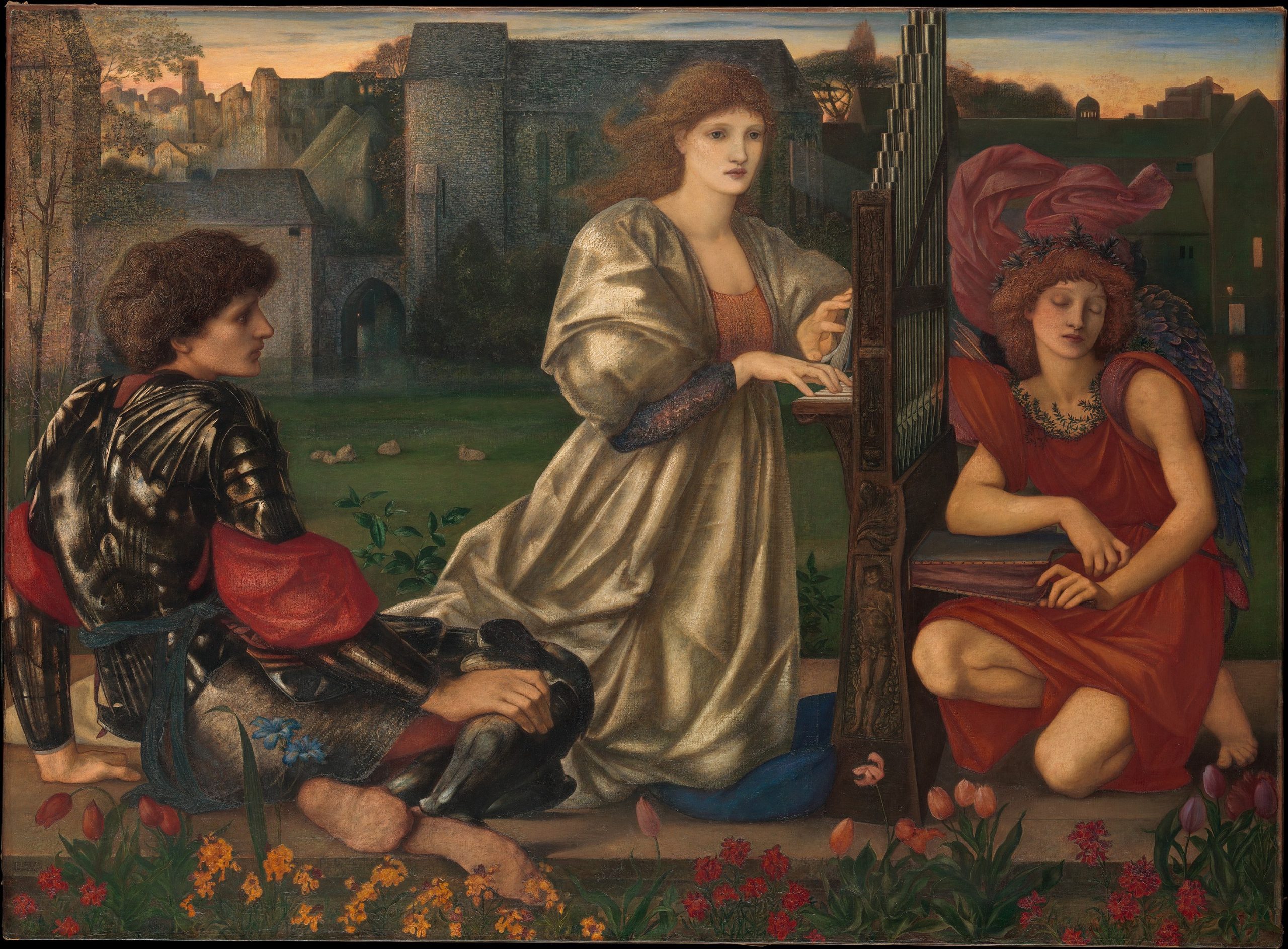
Courtesy: The Alfred N. Punnett Endowment Fund, 1947. “https://www.metmuseum.org/art/collection/search/435826” is licensed under CC0 1.0.
Essays about the Pre-Raphaelite Artists
Painting Stories: Edward Burne Jones based his painting “The Love Song” on a French ballad. Investigate the story behind the painting further by reading the Metropolitan Museum of Art essay here and here.

